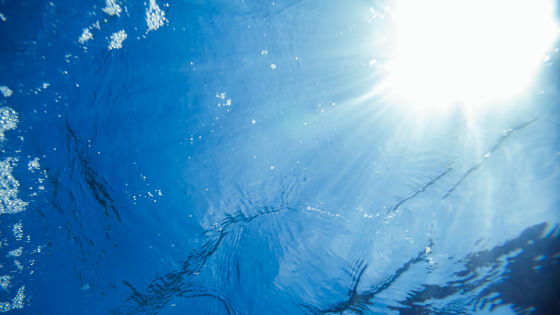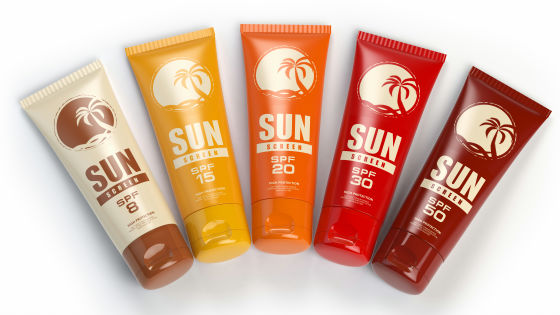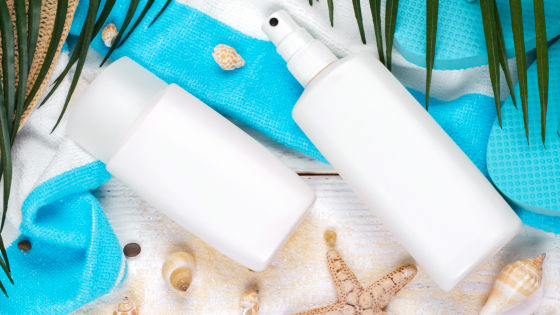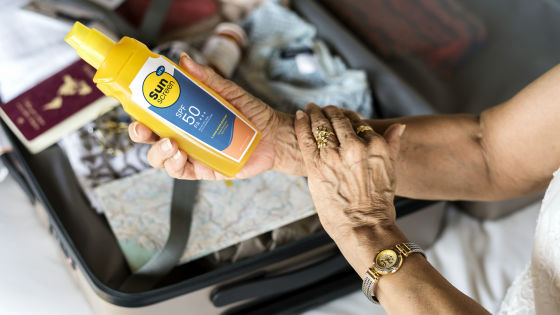Explain what cosmologists should understand to use sunscreen properly

8 Rules for Picking the Right Sunscreen According to Science | Everyday Einstein
https://www.quickanddirtytips.com/education/science/science-sunscreen
◆1: Clarify the purpose of using sunscreen
Part of the ultraviolet rays emitted from the sun is blocked by the ozone layer and clouds, and two types of ultraviolet rays, called ultraviolet A waves (UVA) and ultraviolet B waves (UVB), reach the surface of the earth. UVA accounts for more than 90% of the ultraviolet rays reaching the surface of the earth, and not only is it a common sunburn that darkens the skin, but it also causes the elasticity of the skin and causes wrinkles and sagging. UVB, which is less than about 10% of the ultraviolet rays that reach the earth's surface, may cause redness and swelling and tingling in the skin over a long period of time, while also promoting the production of vitamin D.
Prolonged exposure to both UVA and UVB can cause not only spots but also skin cancer. The effect of sunscreen is expressed by protection from UVA ( PA ) and protection from UVB ( SPF ), but it is important to select each value considering 'what you want to protect your skin from'.

◆ 2: Use sunscreen with SPF 30 or above
The larger the sunscreen PA, the easier it will be to prevent UVA, and the larger the SPF, the easier it will be to prevent UVB. In particular, regarding SPF, in an experiment conducted by the
The best protection against UVB is SPF50 sunscreen or better, but if you don't mind the difference of a few percent, then SPF30 sunscreen is a good choice, says Stierwald.

◆ 3: Check the components of sunscreen
Includes a variety of components in sunscreen, things or dangerous if put in the mouth in, that the harmful ingredients that cause skin allergy has been included
According to the EWG, components such as oxybenzone, octinoxate, and octocrylene may cause skin allergies, and components may be mixed in breast milk when used by pregnant women. In addition, it is stated that the data that proves the safety of each component is insufficient at the time of writing the article, and the use of some components is restricted by the positive list of the Ministry of Health, Labor and Welfare in Japan.

◆4: Understand the difference between 'UV absorber' and 'UV scatterer'
Sunscreens can be divided into two types:

◆5: Use sunscreen correctly
Sunscreen is effective only when it is applied correctly. Doctors recommend that you first apply sunscreen 15 minutes before going out, with your skin dry, and then reapply the sunscreen every two hours of sunlight. 'Personally, the less oily material, the more comfortable it is to apply to the face and body, and the easier it is to apply,' says Stielwald.

◆ 6: Choose a sunscreen with water resistance
Sunscreens that are labeled 'sweat and water resistant' and 'waterproof' can withstand swimming for about 40 to 80 minutes and a lot of sweat, says Stielwald. In other words, it needs to be reapplied frequently when wet. Since water reflects sunlight, the amount of ultraviolet rays near the water's edge also increases, so further caution is required.

◆7: Observe the expiration date of sunscreen
Every summer, there are many people who continue to use old sunscreens, saying, 'I have enough sunscreen I bought a year ago, so I'll use it.' Most of the sunscreens on the market are designed to last for

◆8: Do not overconfidently use sunscreen
No matter how good you buy a sunscreen, 'don't rely on it too much,' Stiewald said. In order to protect the skin from UV rays, it is also important to take UV protection measures other than sunscreen, such as avoiding the sun in the shade and spending time in the shade while using strong sun rays.

Related Posts:
in Science, Posted by darkhorse_log







